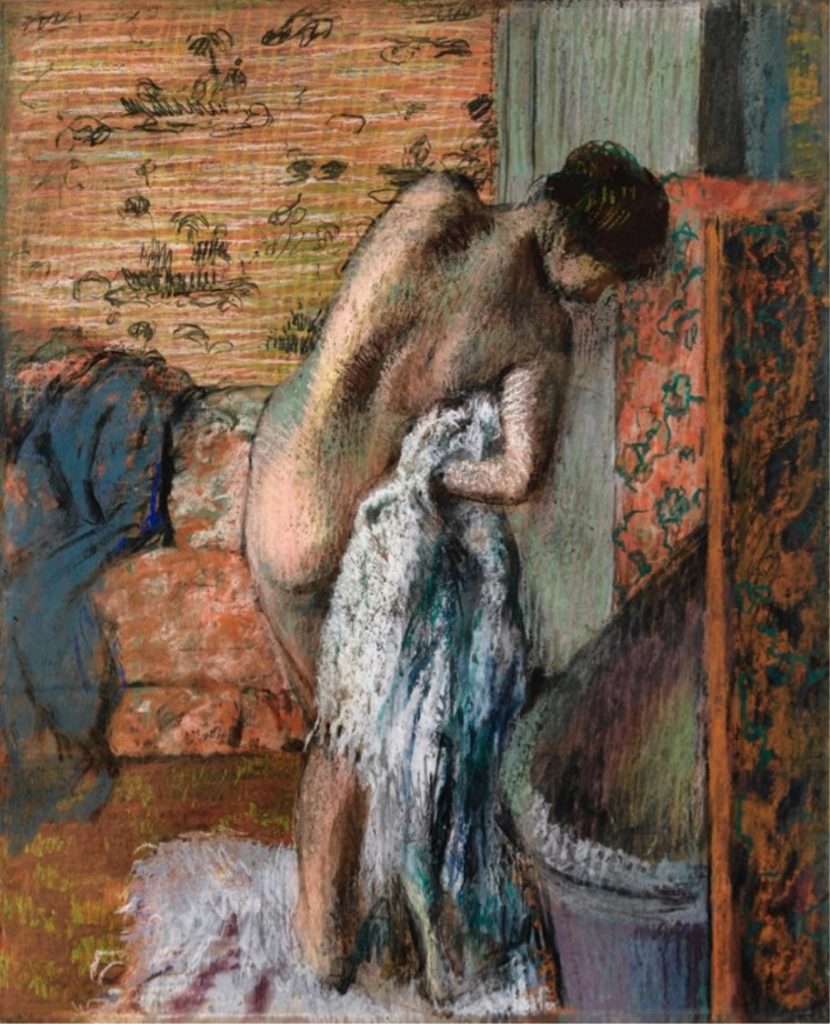
By Vanessa Françoise Rothe
In July 2017, the J. Paul Getty Museum announced one of the most important acquisitions in its history: 16 major drawings and in addition to these works on paper, an exquisite oil on panel painting by Jean Antoine Watteau.
These new acquisitions are now available on view to the public in “Michelangelo to Degas: Major New Acquisitions,” featuring these acquired works, on view through April 22, 2018. This exciting and important new exhibition is curated by Julian Brooks, senior curator of drawings at the J. Paul Getty Museum.
Exhibiting all together, this strong group of top quality drawings and works on paper includes rare Italian Renaissance sheets and exceptional works by many of the most celebrated draftsmen in the history of European art. Historical great such as Michelangelo, Lorenzo di Credi, Parmigianino, Andrea del Sarto, Domenico Tiepolo, Goya, and Degas will be on view.
J Paul Getty Museum director Timothy Potts notes; “This latest acquisition has been the most transformative ever in the history of the Department of Drawings, bringing into the collection a number of extremely rare masterpieces by some of the greatest artists of the Renaissance through the 19th century.” He adds; “Showcasing these works together will demonstrate the monumental nature of this purchase, which also includes a famous painting by the French artist Jean Antoine Watteau. It is increasingly rare to be able to acquire masterpieces of this stature, which have been highly sought after by connoisseurs since the 16th century, and by now have long been swept up by museums.”

Indeed these 16 new reasons are enough to attract not only regulars and locals to the museum, but have intrigued many newcomers. With such an exceptional and rarely seen set of works all together in one room it’s no wonder interest has peaked. Some of the highlights include Michelangelo’s Study of a Mourning Woman (about 1500-1505), a wonderful and famed drawing of a sorrowful figure, hiding some of her face from the viewers. Michelangelo made the work at a pivotal moment early in his career when, already renowned as a sculptor, this work with simple values of light to dark, helps to create much depth in the work and successfully conveys volume – as a sculptor would need to have done in a sketch. Later he became increasingly more well known and esteemed as a painter. Interestingly, the drawing was discovered pasted into an album in the library at Castle Howard, England in 1995.
Senior curator of drawing Julian Brooks reminds us; “To be able to share any one of these drawings with our visitors would be an extraordinary privilege, but to add a group such as this to the collection, and to exhibit them together, is beyond a dream.”

The exhibition also includes, as mentioned, an important oil painting: one of Jean Antoine Watteau’s finest paintings, La Surprise (The Surprise), painted in 1718-19. Watteau created the genre of the fěte galante, explaining a type of evocative outdoor scene of romantic encounters and entertainment, which embodies the light-hearted spirit of French painting in the early eighteenth century. Light touches of well blended oil paint creates a soft whimsical feel in the figures as well as the background, mirroring the light hearted theme and subject.
The museum comments that the work was thought to have been lost for centuries, and only known to historians from a 1731 engraving and copy in the British Royal Collection; this painting was rediscovered in 2007. At the Getty, it joins other exceptional eighteenth-century French paintings by Lancret, Chardin, Greuze, Fragonard, and Boucher.
The famed French Impressionist Edgar Degas brings us to a later time period and is represented by two exceptional, complementary works. After the Bath (Woman Drying Herself) (about 1886) is a magnificent, large pastel of a figure in a beautiful interior, looking almost decorative in the background. This work includes Degas-famed soft transitions on the figure in a warm inviting color palette. It is interesting to note that it was created when the artist had all but ceased to exhibit and had retreated into his studio to produce increasingly bold, experimental work.

A second work by Degas, Two Studies of Dancers (about 1873), a superbly-preserved preparatory drawing on green paper can also be found among the treasures. Created in black chalk highlighted with white chalk, this rarely seen master work awaits you at the Museum.
The exhibit “Michelangelo to Degas: Major New Acquisitions” is currently on view in Los Angeles from through April 22, 2018, at the J. Paul Getty Museum. Additional information can be found at getty.edu/360.
Sign up to receive Fine Art Today, the weekly e-newsletter from
Fine Art Connoisseur magazine.







